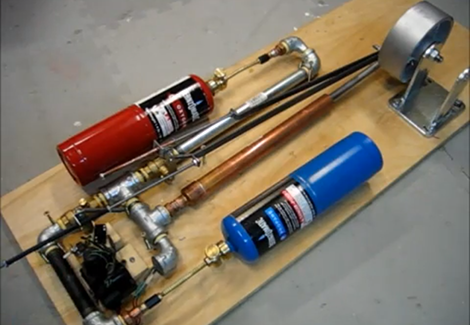
An IFF system – Identification of Friend or Foe – are used by military aircraft in battle situations to determine if another aircraft is being piloted by a fellow aviator or an enemy. For the boots on the ground, friendly fire is generally regarded as a very bad thing, so a few students in [Bruce Land]’s ECE 4760 class at Cornell decided to make a wearable version of an IFF for their final project.
[Wen Hao Lui] and [Aadeetya Shreedhar] broke their project down into two parts: an initiator unit and a receiver unit. The initiator unit sends an encryption key to the receiver unit which, in turn, replies back to say, ‘don’t shoot.’ [Wen] and [Aadeetya] needed to choose between using RF or laser-based communications for the initiator, but the difficulty in acquiring or building a radio antenna with the requisite directionality made a laser the obvious choice.
The receiver unit has eight phototransistors attached to a vest and will reply to the initiator unit via a Wi.232 radio module when the laser illuminates the phototransistors. In the event of an enemy acquiring one of these vests, the project includes a pulse detection circuit that will erase the encryption keys when the wearer’s pulse drops to zero. A bit morbid, but the video after the break sure makes it look cool.
Continue reading “IFF System Keeps You From Shooting Your Friends”












